Tag archives: China
Tsinghua University moves on up
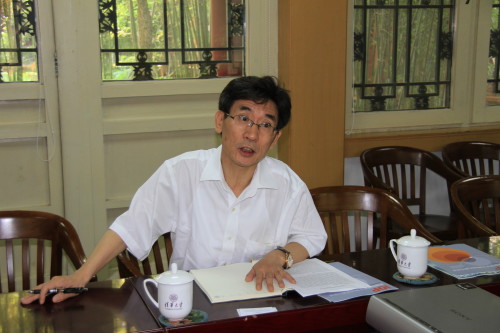
Figures at the ready: Qi-Kun Xue from Tsinghua University, which has 40,000 students. (Courtesy: Mingfang Lu)
By Matin Durrani in Beijing, China
I like big cities so I feel quite at home in Beijing with its skyscrapers, highways and endless traffic. Still, it was a pleasure yesterday on the third day of my visit to the Chinese capital to arrive at the green lawns of Tsinghua University. Situated in a former imperial garden, the university was founded in 1911 and is one of the top institutions in the country. According to the 2015–16 Times Higher Education rankings, it’s also the fifth best in Asia.
Quite why Tsinghua is so well rated quickly became clear as I listened to the numbers reeled off by Tsinghua’s vice-president for research Qi-Kun Xue: the university has 6000 research faculty and staff, a total research budget of $700m, and more than 40,000 students (two-thirds at postgraduate level). Like much of modern China, it’s benefiting from the government’s long-term commitment to growth through investment in facilities and infrastructure.
View all posts by this author | View this author's profile
China’s chief Moon scientist Ziyuan Ouyang outlines lunar plans
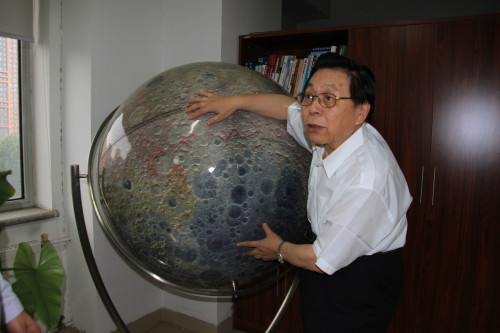
The Moon man: Ziyuan Ouyang in his office at the National Astronomical Observatories with a lunar globe covered with images taken by Chinese craft. (Courtesy: Mingfang Lu)
By Matin Durrani in Beijing, China
I caught up this morning on the second day of my visit to Beijing with Ziyuan Ouyang, chief scientist of China’s Moon programme at the National Astronomical Observatories, which lies not far from the city’s iconic “bird’s-nest” Olympic stadium.
I’d first met Ouyang on my last visit in 2011 when the country had so far launched two lunar missions – Chang’e 1 (which orbited the Moon for 18 months before crash-landing onto the lunar surface) and Chang’e 2 (another lunar orbiter that later moved off into interplanetary space).
China’s lunar efforts have continued and Ouyang explained to me what has happened since my last visit – and what the country plans to do next.
View all posts by this author | View this author's profile
China eyes new high-energy collider
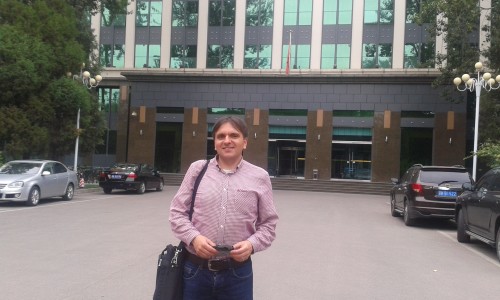
Matin Durrani outside the Institute of High Energy Physics in Beijing before interviewing Xinchou Lou.
By Matin Durrani in Beijing, China
I had just landed in Beijing this morning when I saw an e-mail from my colleague Mingfang Lu waiting for me on my phone. Mingfang, who’s editor-in-chief at the Beijing office of the Institute of Physics, which publishes Physics World, has been helping me to organize my itinerary for the next week as I gather material for our upcoming special report on physics in China. You may remember we published a Physics World special report on China in 2011 but so much has happened since then that we felt it’s easily time for another.
Mingfang’s e-mail was to say we would be off at 2.30 p.m. to interview Xinchou Lou, a particle physicist at the Institute of High Energy Physics, about the country’s ambitious plans for a “Higgs factory”. If built, this 240 GeV Circular Electron–Positron Collider (CEPC) would be a huge facility (50 km or possibly even 100 km in circumference) that will let physicists study the properties of the Higgs boson in detail. I say “if”, but knowing China’s frenetic progress in physics, it will almost certainly be a case of “when”.
View all posts by this author | View this author's profile
China’s Silicon Valley
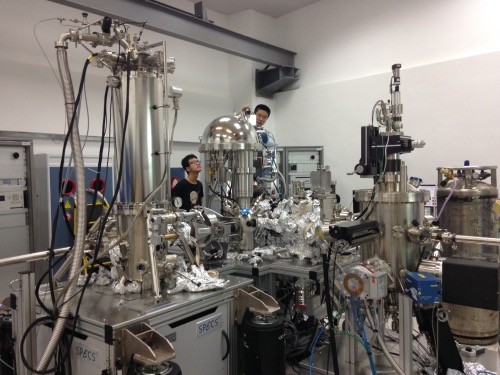
Researchers working on an angle-resolved photoemission spectrometer at the South University of Science and Technology of China.
By Michael Banks in Shenzhen, Guangdong province, China
It is well documented how China seems to be able to build cities within weeks. But how quickly could it build its very own Silicon Valley?
Well, that question may well be answered very soon. Today, I was at the South University of Science and Technology of China (SUSTC), which is located in Shenzhen, Guangdong province.
The university was only created in 2011 and currently the physics department has a sole focus on experimental and theoretical condensed-matter physics, with around 20 undergraduate students each year (that number is expected to rise as the department expands into other areas of physics).
View all posts by this author | View this author's profile
Putting China at the forefront of neutron science
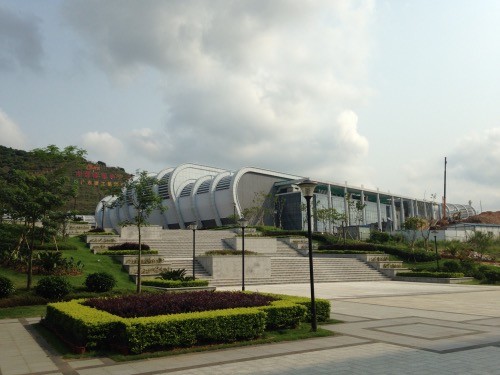
The target station for the China Spallation Neutron Source in Dongguan, China.
By Michael Banks in Dongguan, Guangdong province, China
Today I took the 60 km trip north from Shenzhen to Dongguan – home of the China Spallation Neutron Source (CSNS).
China has two nuclear reactors that generate neutrons for research via nuclear fission, but the CSNS is the country’s first spallation source. This type of facility accelerates protons before smashing them into a target to produce copious amounts of neutrons. They are then sent to numerous instruments that are used by researchers to study materials.
View all posts by this author | View this author's profile
Building a better society

Ruiqin Zhang, president of the Physical Society of Hong Kong.
By Michael Banks in Hong Kong
This morning I took Hong Kong’s metro to the City University of Hong Kong, where I met Ruiqin Zhang, who as well as being a solid-state physicist at the university is also president of the Physical Society of Hong Kong.
View all posts by this author | View this author's profile
China 101

Theorist Giulio Chiribella of Hong Kong University.
By Michael Banks in Hong Kong
“Hong Kong is a bit like China 101,” says Giulio Chiribella, a quantum-information theorist from Hong Kong University. “China for beginners.”
The native Italian ought to know, having spent three years in Beijing at Tsingua University before moving to Hong Kong last August.
View all posts by this author | View this author's profile
Progress update in Chinese physics
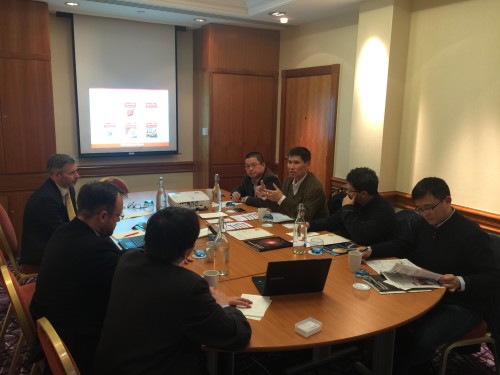
Wenlong Zhan, president of the Chinese Physical Society (second from left on right-hand side) and colleagues, in discussion with Paul Hardaker, chief executive of the Institute of Physics (far left), and colleagues.
By Matin Durrani
China continues to make great progress in physics, with new facilities and projects starting up all the time. Just this week we’ve reported on plans to build a new neutrino experiment at the China Jinping Underground Laboratory (CJPL). The world’s deepest lab, it’s located under a mountain – with about 2400 m of rock cover – in China’s south-western Sichuan province.
Physics World has long kept a close eye on the progress of the physics community in China and in fact we published our first ever special report on the country in 2011. Since then, however, so much more has been going on that we felt it’s time to make a return trip and will be producing another special report in September this year to give you further insights into physics in China.
What it’s like collaborating with physicists in China
By Matin Durrani
Barry Sanders – director of the Institute for Quantum Science and Technology at the University of Calgary, Canada – last week visited the headquarters of IOP Publishing, which publishes Physics World.
Sanders has just taken over from Eberhard Bodenschatz as editor-in-chief of New Journal of Physics, and it’s a coup to have him in the role, not least because he’s an incredibly busy physicist, making – by his reckoning – at least 150 international flights a year.
The January 2016 issue of Physics World is now out

Polarized patterns: the cosmic microwave background as you’ve never seen it before. (Courtesy: Planck Collaboration)
By Matin Durrani
Happy new year and welcome back to Physics World after the Christmas break.
It’s always great to get a new year off to good start, so why not tuck into the first issue of Physics World magazine of 2016, which is now out online and through the Physics World app.
Our cover feature this month lets you find out all about the Planck mission’s new map of the cosmic microwave background. Written by members of the Planck collaboration, the feature explains how it provides information on not just the intensity of the radiation, but also by how much – and in which direction – it’s polarized.
View all posts by this author | View this author's profile